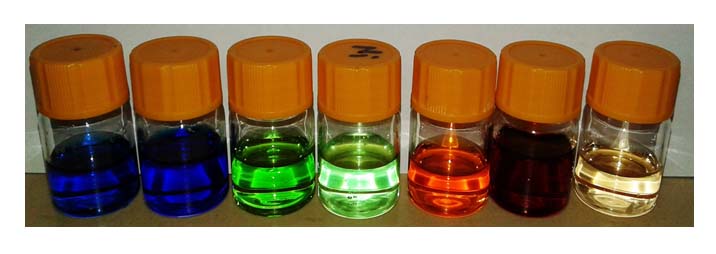The present study was conducted to synthesis of some new imine VO(II), Pd(II) and Ag(I) complexes derived from 2-[(2-Hydroxy-naphthalen-1-ylmethylene)-amino]-benzoic acid were synthesized. The prepared imine ligands were analyzed by their melting point, IR, 1H NMR and 13C NMR spectroscopy. The investigated imine complexes were characterized by elemental analysis, FT IR, Uv-vis and thermal analysis (TGA) in air from ambient temperature to 750o C. The experimental results revealed that the investigated complexes contain hydrated water molecules. The molar conductance values of complexes are relatively low, indicating the non-electrolytic nature of these complexes. Magnetic susceptibility measurements show that the investigated complex of VO(II) is paramagnetic and the investigated complexes of Pd(II) and Ag(I) are diamagnetic. Moreover, the stability constants of the prepared complexes were determined spectrophotometrically. All the complexes were found to be monomeric 1: 1 (M:L) stoichiometry in nature with square planner geometry for Pd(II) and Ag(I) , and distorted square pyramidal for VO(II). Moreover, the prepared imine ligands and their complexes were evaluated for antimicrobial effect against some types of bacteria and fungi. The results of these studies indicate that the metal complexes exhibit a stronger antibacterial and antifungal efficiency compared to their corresponding imine ligand. Moreover, the interaction of the investigated complexes with CT-DNA was checked using spectral studies, viscosity measurements and gel electrophoreses. The absorption titration studies revealed that each of these complexes is an avid binder to calf thymus-DNA. Also, there was appreciable changes in the relative viscosity of DNA, which is consistent with enhanced hydrophobic interaction of the aromatic rings and intercalation mode of binding. In addition to, the cytotoxic activity of the prepared imine complexes on human colon carcinoma cells, (HCT-116 cell line), hepatic cellular carcinoma cells, (HepG-2 cell line) and breast carcinoma cells (MCF-7cell line) has cytotoxicity effect against growth of carcinoma cells compared to the clinically used Vinblastine standard. Furthermore, the prepared imine ligand was tested as a sensor for various transition metal ions.


